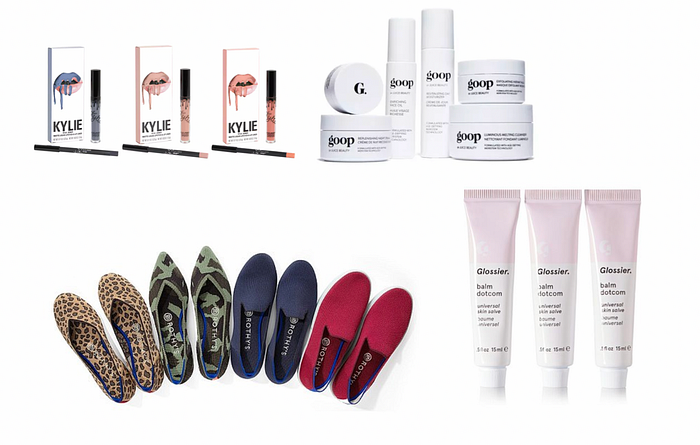In the past when new, scaleable customer acquisition channels emerged (whether the portal deals of the mid ‘90s, paid search in the early ‘00s or Facebook in the 2010 period) startups stole a beat from slower moving incumbents and built brands through paid marketing on the new channels. But even though Snap, Pinterest, and Amazon have grown, the digital advertising market has been a duopoly for the last few years, with 60% of all online ad spend flowing through Facebook and Google. As a result, online advertising is extremely efficiently priced — making it increasingly difficult for today’s startups to reach scale through online advertising alone.
Over the past 5–10 years, most new brands have relied on marketing through Facebook and Instagram to break through. But paid social is most effective for brands who have the highest lifetime values and can therefore pay the highest customer acquisition costs. When faced with an incumbent’s advantages in brand recognition, product development and manufacturing scale, this often puts a startup at a disadvantage.
Given these hurdles to relying on paid social alone, startup brands need to also develop a strong organic growth channel. We’ve seen a few different ways to do that:
- The Content to Commerce Model:
As my partner Nicole Quinn has said,
“The best way to move into commerce from content is when the customers are asking you to go. That’s what we saw with both Goop and Glossier.”
Goop started as a lifestyle newsletter, long before it became an e-commerce business. Glossier started as a beauty blog (Into The Gloss) with a devoted community of followers before launching their own product line. In that same vein, blogs like Man Repeller, Something Navy, and Song of Style also leveraged their content into commerce. In each of these instances, commerce grew natively out of the content being produced. The content was opinionated, it had a clear point of view, and it gathered an audience that shared that point of view. This positioned them perfectly to launch products into a receptive audience that shared that point of view. And because these audiences were captive, loyal and growing, they offered an organic and owned channel for revenue growth.

Some companies are trying to build this model in reverse. With Away’s Here magazine, content followed the commerce. Based on the community’s feedback, they built a full scale content arm. Dollar Shave Club built MEL Magazine, an extension of their brand and community. I’m sure that this is being driven by a desire to average down customer acquisition costs by building an owned organic channel. The success of coming from this direction is still to be determined.
2. The Organic Social Model:
While paid social is expensive today, organic social is free. For most startup brands, organic social reach is very limited. But there is a set of brands for whom organic social can start from a very strong base, and that is brands that are founded by celebrities and other public figures with a large existing following. Good examples include Fenty (Rihanna), Kylie Cosmetics (Kylie Jenner), The Honest Company (Jessica Alba), Fabletics (Kate Hudson), HAUS LABORATORIES (Lady Gaga) and Art of Sport (Kobe Bryant). We’ve been big believers in this model and have made several investments under this thesis.

This isn’t about stapling a celebrity to a product though. Success hinges on a fan base with true engagement and a product that is clearly authentic to the tastes and interests of the founding celebrity. If the product feels more like a sponsored endorsement, today’s followers will see through it easily.
3. Word of Mouth:
We’ve written in the past about brand resonance and the “word of mouth” viral loop that occurs when a product is loved, used in public, has a standout design, and builds a user’s social capital when talking about it.

This is hard to do. NPS can be misleading. Even if people love a product, it is unusual for people to go out of their way and simply recommend that product out of the blue. However, people are more likely to talk about and recommend a product if they are asked about it and if it makes them look good to do so.
If the product aligns with an affinity or cause that the user believes in, she is more likely to talk about your product and emphasize how it lines up with that cause. Allbirds, Cotopaxi and The Honest Company all benefit from word of mouth recommendations. Others include Rothys and Peleton. Given Millenials and Gen Z’s strong predispositions towards social causes, this explains why many new brands are so mission driven.
There is no question that if you launch a new brand online today, paid social will always be part of your marketing mix, and it can amplify what’s working in your organic channels. But focusing on organic channels will allow you to build something special. You’ll have a big leg up in getting to scale if you can take advantage of one of these three organic channels: an owned content channel, organic social, or real-world word-of-mouth. Without them, you can still build a nice business, but you may struggle to find true breakout scale.





